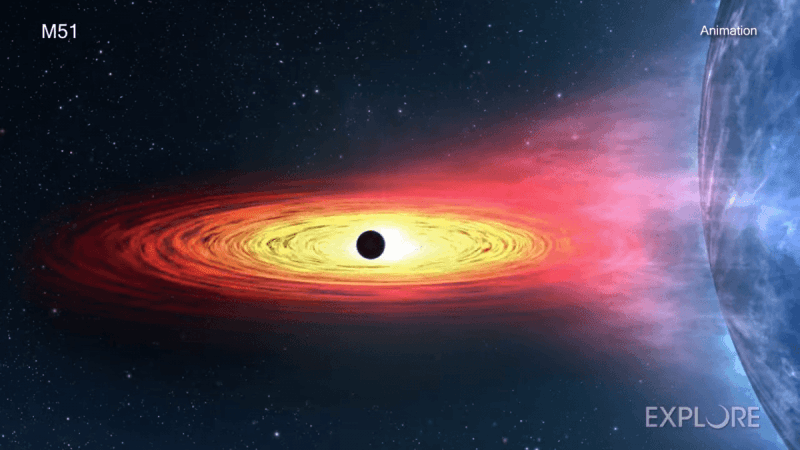
[ad_1]
Astronomers discovered the first potential exoplanet the size of Saturn outside of the Milky Way. The planet’s possibility was discovered in the spiral galaxy Messier 51 (M51) – often known as the Whirlpool Galaxy – which is 28 million light-years distant.
The research was headed by Dr Rosanne Di Stefano of Harvard’s Center for Astrophysics and Smithsonian in Cambridge, along with others. The study was published in the journal Nature Astronomy.

The discovery
The astronomers discovered it by searching for a distinctive decrease in the brightness of X-rays induced by the transit of a planet in front of the X-ray binary using NASA’s Chandra X-ray Observatory.
Although over 5,000 exoplanets have been discovered so far, most are inside the Milky Way galaxy, about 3,000 light-years from Earth. “Our finding of the planet candidate extends the scope of the planet searching to ranges nearly 10,000 times further,” adds Di Stefano.
They usually include a neutron star or black hole that draws gas from a nearby partner star – in this instance a star 20 times the mass of our Sun. Superheated material around a neutron star or black hole shines in X-rays.
The signal lasted roughly three hours until the X-ray emission stopped. They predict that the exoplanet candidate would be around the size of Saturn, and orbit the neutron star or black hole at around twice Saturn’s distance from the Sun — approximately similar to Uranus’ orbit.
“Unfortunately, we would have to wait decades to observe another transit to establish that we’re seeing a planet,” said co-author Nia Imara of UC Santa Cruz. “And we wouldn’t know when to look since we don’t know how the amount of time required to orbit.”

Exoplanets
Exoplanets are extrasolar planets. While exoplanets were not proven until the 1990s, scientists knew they existed. Thousands have been found in just two decades.
These planets range in size and orbit. Some are giant planets orbiting their stars; others have been icy or rocky. NASA and other organisations are searching for a planet the size of Earth, circling a sun-like star in the habitable zone.
The livable zone is the region of distances from a star where liquid water seas are possible. The zone was originally defined by basic thermal equilibrium, but modern estimates include many more considerations, such as the planet’s atmosphere’s greenhouse effect. This renders habitable zone limits “fuzzy.”
The Kepler Space Telescope, launched in 2009, has detected most exoplanets. Kepler detected 2,342 verified exoplanets and reported the presence of 2,245 more as of mid-March 2018.
The finding of exoplanets has heightened curiosity in ET life. The habitable zone of a star is of particular significance because it contains liquid water, a need for life on Earth. In assessing a planet’s fitness for life, scientists look at a variety of additional characteristics.
[ad_2]
Source link